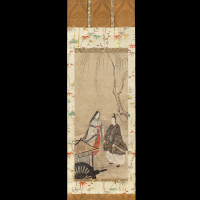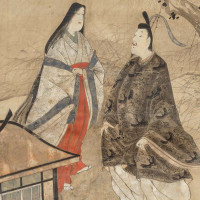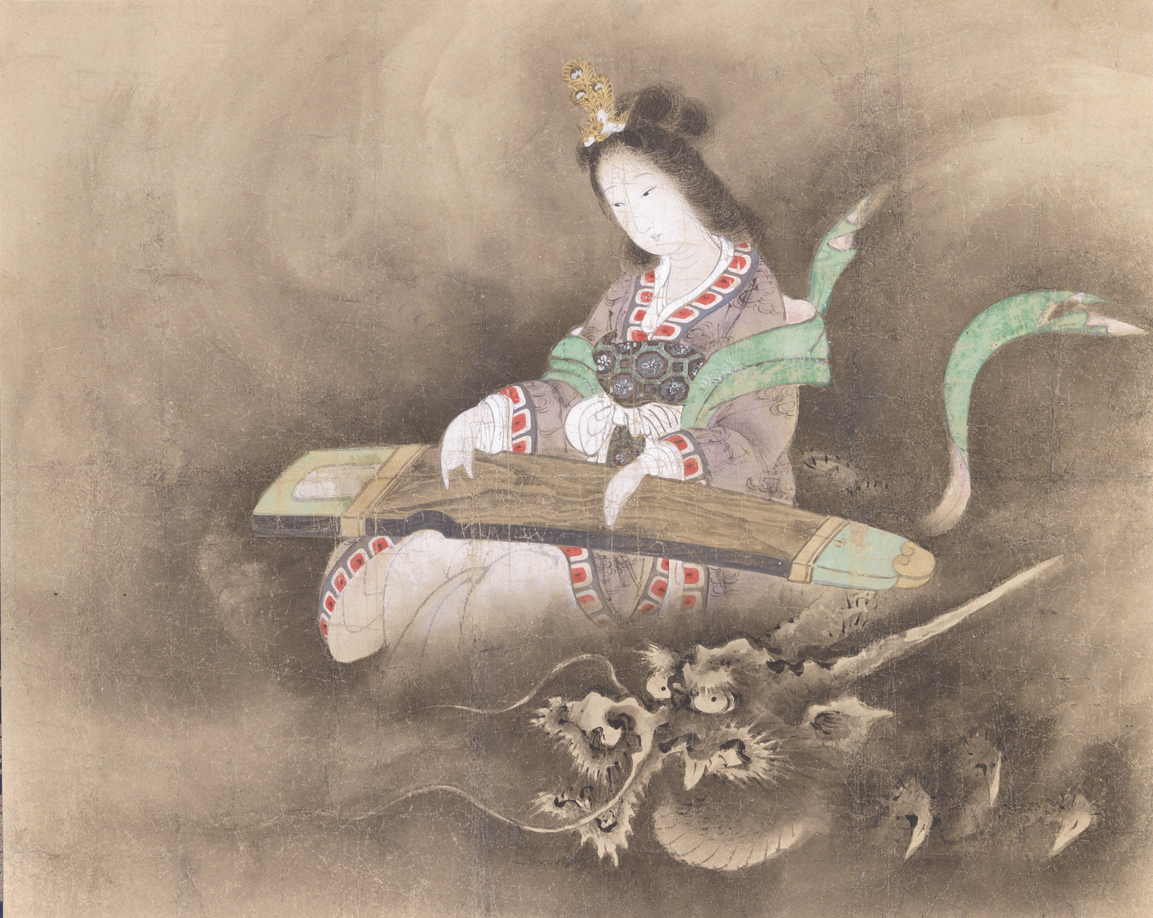Monogatari
Paintings



- Contact Us
-
Material
Ink on paper, embroidered silk mounting, gold thread, bone jiku roll
-
Size
88 x 38 cm (172 x 48 cm)
-
Period
Edo period (16th-17th century)
-
Box
Shikibako
Description
“Tales of Ise: Akutagawa”
Ise monogatari
Artist: attributed to Iwasa Matabei 岩佐又兵衛 (1578-1650)
Hakogaki
[Top]
Painting of a scene from The Tale of Ise, a true brush by Iwasa Matabei
[Back]
This was given from a nobility/ Imperial family to me, on the 23rd of the 8th month in the year of Mizunoe-uma of the Genroku 15 [1702]
Iwasa Matabei, whose full name is Iwasa Matabei-Nojō Shōi, was a painter from the early Edo period, who was born in the 6th year of Tenshō (1578), and died in the 3rd year of Keian (1650) at the age of 73. He was the son of Araki Murashige, a prominent daimyō of the Sengoku period who had been made to commit suicide as servitor of Oda Nobunaga, leaving Matabei to be raised with his mother's family name, Iwasa.
He trained himself in the workshop of Kanō Shigesato, but was more influenced by the Tosa school. He specialized in genre scenes of historical events and illustrations of classical Chinese and Japanese literature, as well as portraits. Matabei's work was noted for its distinctive figures, with large heads and delicately drawn features, and he was effective both in color and monochrome ink-wash painting, using an individual brush technique combining elements of the two schools. He was also known as Ukiyo-e Matabei, believed to be one of the first developers of the ukiyo-e style because he was acclaimed as the painter of the famous Hikone screen. But this paternity is today completely denied, because his patrons were so high in the social hierarchy that he could not have created such inexpensive works. Maybe he was confused with a ukiyo-e artist character named Ōtsu no Matabei, in a play by Chikamatsu.
Iwasa Matabei first served Tadanao Matsudaira, lord of the Katajo landlord in Echizen (current prefecture of Fukui). Thereafter, in the 14th year of Kanei period, he moved to Edo (current city of Tokyo) on the invitation of shogun Tokugawa Iemitsu.
Among his literary sources are The Tales of Ise (Ise monogatari) and The saying of Genji (Genji monogatari), which he intertwined with Chinese legends. He signed a late series of portraits of the Thirty-six Poetry Immortals commissioned in 1640 by shōgun Tokugawa Iemitsu for the Tōshō-gū temple in Kawagoe, as "the artist Matabei of the later fashion from Tosa Mitsunobu" (eshi Tosa Mitsunobu matsuryū Matabei). Many scrolls such as famous Yamanaka Tokiwa Emaki (MOA Museum of Art, Atami, Shizuoka prefecture), as well as costume drawings, are attributed to Matabei and his workshop.
His son Katsushige (d. 1673) was also a painter, known for his dancing figures in a style close to his father’s.
The scene depicted is from chapter six of The Tales of Ise (Ise Monogatari), “Akutagawa”. The main protagonist Ariwara no Narihira abducts and elopes with a noble lady. They are often depicted under a willow tree. Sometimes the man is depicted carrying the lady on his back, eloping in a desolate landscape.



